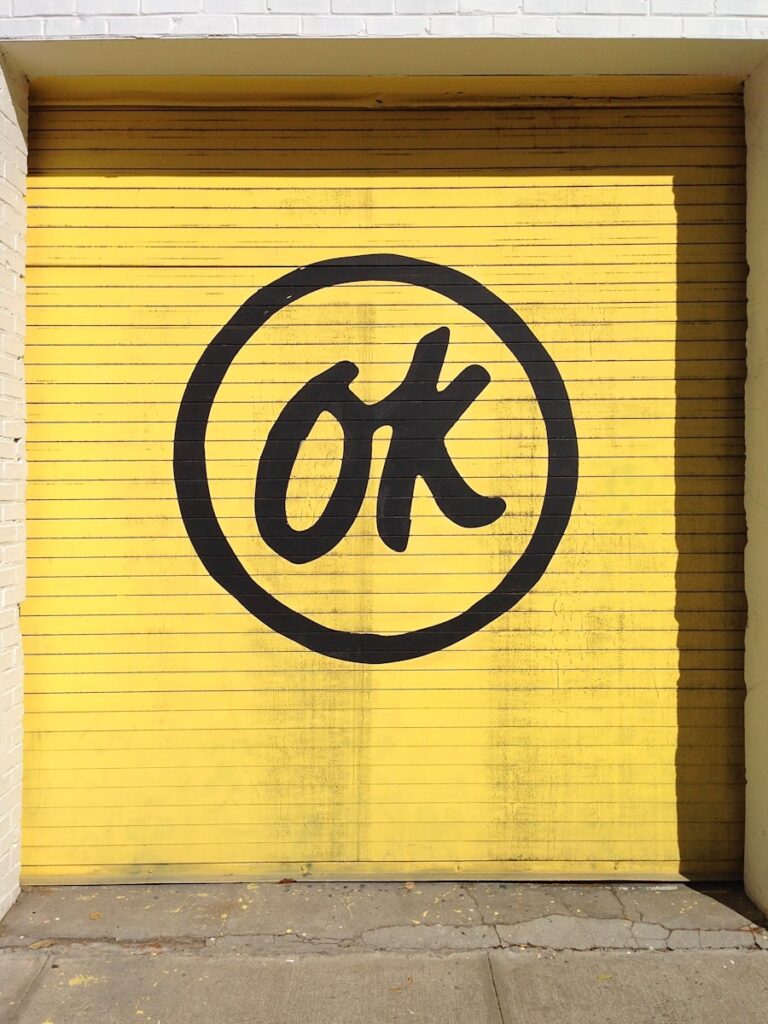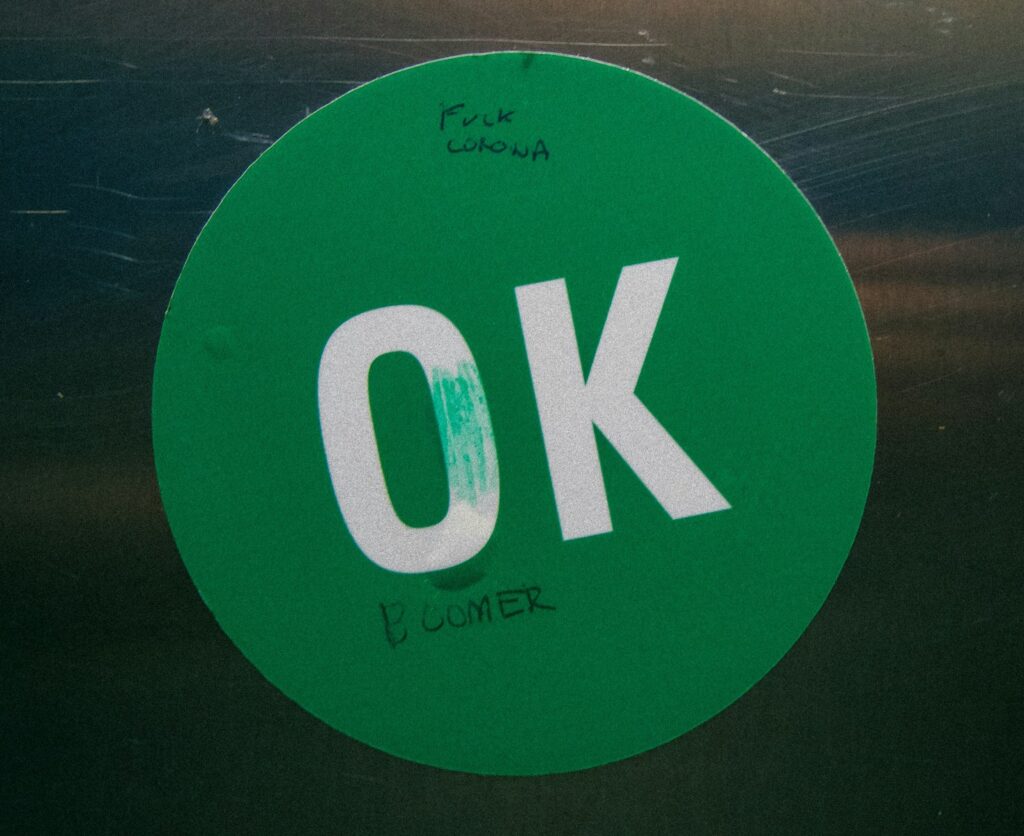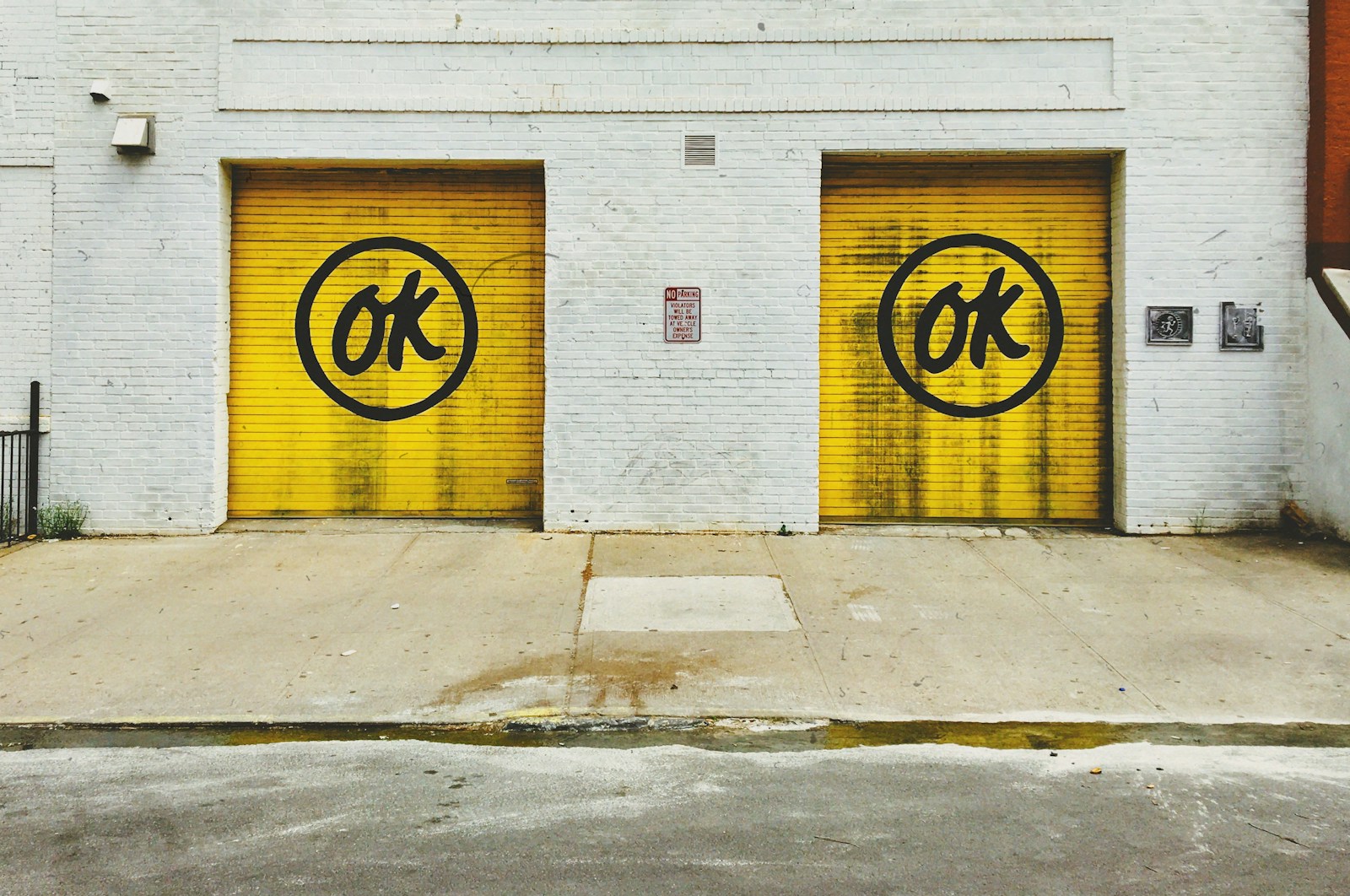How to Say ‘Oh, Okay’ in Spanish: Key Phrases and Regional Variations
You know that moment when you’re chatting with a friend who’s fluent in Spanish, and they say something you don’t quite catch? You don’t want to seem lost, so you nod and say, “Oh, okay.” But wouldn’t it be great to have the perfect Spanish phrase up your sleeve for those times? Imagine the look of surprise and delight on their face when you respond effortlessly in their language.
Picture this: you’re sipping coffee at a bustling café in Madrid. The aroma of freshly baked pastries fills the air, and the hum of conversations surrounds you. Your friend explains something in Spanish, and instead of fumbling for words, you confidently say, “Ah, vale” or “Oh, está bien.” Not only do you feel more connected, but you also show respect for their culture.
Common Spanish Translations for “Oh Okay”

Exploring conversations in Spanish can be tricky, but saying “oh okay” doesn’t have to be. This simple phrase has a few equivalents in Spanish, depending on where you are and the context. Here’s a handy guide to get you started.
“Ah, vale” – The Most Popular Equivalent
This phrase is the go-to for many Spanish speakers, especially in Spain. It’s casual and perfect for everyday conversations.
Pronunciation Guide
You’d pronounce it as “ah VAH-leh,” emphasizing the first syllable. Pretty straightforward, right?
Usage in Different Spanish-Speaking Regions
While you’ll hear “Ah, vale” mainly in Spain, it’s also understood in some Latin American countries. It’s your best bet for sounding natural in informal settings across different regions.
“Oh, está bien” – A More Formal Option
Looking for something a bit more refined? “Oh, está bien” fits the bill. It’s more formal and suitable for professional or serious conversations.
“Ya veo” – For Expressing Understanding
Ever want to say, “Oh, I see”? “Ya veo” is your phrase. It’s perfect when you want to convey that you understand something.
“De acuerdo” – Indicating Agreement
When you need to show you agree with someone, “De acuerdo” is the way to go. It’s versatile and ideal for both formal and informal conversations.
Phrase | Usage | Pronunciation |
|---|---|---|
Ah, vale | Informal settings, mainly in Spain | ah VAH-leh |
Oh, está bien | Formal conversations | oh es-TAH byehn |
Ya veo | Expressing understanding | yah VEH-oh |
De acuerdo | Indicating agreement in various contexts | deh ah-KWEHR-doh |
Context and Usage of “Oh Okay” in Spanish

Understanding how to say “oh okay” in Spanish enriches your conversations and shows your respect for the culture. Let’s jump into the context and usage of this phrase in various situations.
Casual Conversations: When to Use “Ah, vale”
In casual conversations, using “Ah, vale” can make you sound like a local. In Spain, it’s as common as saying “sure” in English. In Mexico, you might hear “Ah, órale” instead. Both phrases fit perfectly when acknowledging something casually. For instance, if a friend invites you out for tapas, you could respond, “¿Vamos a las 8?” and you’d say, “Ah, vale”.
Formal Settings: Appropriate Use of “De acuerdo”
When the setting is more formal, “De acuerdo” is your go-to phrase. It’s like saying “Alright” or “Understood” in English but with a formal touch. Think about a business meeting in Buenos Aires where your colleague outlines the next steps. Responding with a confident “De acuerdo” shows professionalism and agreement.
Expressing Realization: Best Times for “Ya veo”
Have you ever had a moment where something just clicks? That’s when you’d use “Ya veo”, which translates to “Oh, I see.” It’s perfect for those aha moments in conversations. Imagine you’re discussing Spanish grammar, and suddenly everything makes sense. You’d say, “Ya veo”, showing your newfound understanding.
Responding to Information: Using “Ah, bueno”
When someone shares news or information, saying “Ah, bueno” is akin to responding with “Oh, okay.” It’s versatile and can convey different emotions based on tone. For example, if a friend tells you about a change in plans, you might say, “Ah, bueno”, to show acceptance.
Context | Spanish Phrase | Regional Variations |
|---|---|---|
Casual Conversations | “Ah, vale” | Mexico: “Ah, órale” |
Formal Settings | “De acuerdo” | None |
Expressing Realization | “Ya veo” | None |
Responding to Information | “Ah, bueno” | None |
Regional Variations of “Oh Okay” in Spanish

While “Oh, okay” seems like a simple phrase, its translations in Spanish vary widely based on the region. This journey across Spanish-speaking countries dives into how each uses unique expressions, adding richness to your learning experience.
Spain: “Vale” and Its Popularity
In Spain, you’ll often hear “Vale” in response to statements or suggestions. Imagine you’re at a café in Barcelona, and you need to confirm your order. The barista asks, “Todo bien?” (Everything alright?), and you respond with “Vale.” This little word is a staple in everyday Spanish conversations. It’s equivalent to saying, “Got it” or “Okay” in English. The charm of “Vale” lies in its simplicity and universal understanding across Spain.
Mexico: “Órale” and “Sale” as Informal Alternatives
Travel to Mexico, and you’ll discover “Órale” and “Sale” as endearing alternatives. Picture yourself in a bustling market in Mexico City. A vendor offers you a price, and you casually reply, “Órale.” It’s like saying, “All right” or “Let’s do it.” It’s deeply informal and commonly used among friends. Meanwhile, “Sale” could be your go-to for a quick agreement. Let’s say you’re confirming plans with a friend, you both agree and end the conversation with “Sale,” similar to “Deal” in English. These terms add a lively flair to Mexican Spanish.
Argentina: The Use of “Dale”
Heading to Argentina, you’ll find “Dale” being used with enthusiasm. Picture an energetic soccer game in Buenos Aires. A friend shouts, “Vamos al partido más tarde?” (Shall we go to the game later?), and you reply with a spirited “Dale,” meaning “Let’s go” or “Sure.” “Dale” conveys an encouraging tone, reflecting the vibrant spirit of Argentine culture. It’s an excellent example of how language can capture the essence of a place.
Colombia: “Listo” as an Equivalent
In Colombia, “Listo” takes the stage. Imagine exploring the colorful streets of Bogotá. You’re making plans with a local, and after deciding on a time, you both say, “Listo.” It’s used like “Okay” or “Ready” in English. “Listo” effortlessly fits into various contexts, whether you’re confirming a decision or expressing readiness. It’s a versatile word that makes Colombian Spanish sound refreshingly concise.
Region | Spanish Term | Context Description |
|---|---|---|
Spain | “Vale” | Used in general conversations for agreement. |
Mexico | “Órale” | Informal, used among friends to express understanding. |
Mexico | “Sale” | Informal, similar to “Deal” when confirming plans. |
Argentina | “Dale” | Enthusiastic, often used in encouraging contexts. |
Colombia | “Listo” | Versatile, used to confirm decisions or express readiness. |
Tone and Nuance in Spanish “Oh Okay” Expressions

When someone says “oh okay” in Spanish, context matters. Different expressions convey agreement, disappointment, indifference, or skepticism, and knowing these helps you communicate more effectively. Let’s jump into how you can master these nuances.
Conveying Genuine Agreement: “Claro” and “Por supuesto”
Want to show strong agreement? Use “Claro” or “Por supuesto”. They both mean “of course.” Imagine you’re planning an outing with friends and one suggests going to the beach. Responding with “Claro” shows you’re excited and agree wholeheartedly. Here, you’re not just agreeing; you’re enthusiastically affirming the plan.
Indicating Mild Disappointment: “Bueno, está bien”
Ever had to agree half-heartedly? That’s where “Bueno, está bien” (well, it’s fine) fits. Perhaps your friend cancels a fun weekend trip, and though you’re okay with it, you’re also a bit bummed. Saying “Bueno, está bien” softens the blow, showing you’re resigned but slightly disappointed.
Showing Indifference: “Como sea”
Indifference can be tricky to express. “Como sea” (whatever) captures that “I don’t really care” vibe. Picture a scenario where your friends can’t decide on a restaurant. If you genuinely have no preference, “Como sea” indicates you’re indifferent to their choice without sounding rude.
Expressing Skepticism: “Ah, ¿sí?”
Skeptic about something? “Ah, ¿sí?” translates to “oh, really?” and helps you sound both surprised and doubtful. For example, a colleague tells you an unbelievable story about a recent encounter. Responding with “Ah, ¿sí?” keeps you engaged while signaling disbelief.
Situation | Expression | English Translation | Context Example |
|---|---|---|---|
Genuine Agreement | Claro | Of course | Friend suggests beach, you agree excitedly |
Genuine Agreement | Por supuesto | Of course | Planning event, you affirm decision strongly |
Mild Disappointment | Bueno, está bien | Well, it’s fine | Canceled plans, you’re resigned but disappointed |
Indifference | Como sea | Whatever | Choosing restaurant, you don’t mind any choice |
Skepticism | Ah, ¿sí? | Oh, really? | Hearing an unbelievable story, you express doubt |
Understanding these phrases helps you convey the exact tone and emotion you’re feeling. Using them correctly in conversations makes you sound more natural and connected to the language.
Common Mistakes to Avoid When Saying “Oh Okay” in Spanish

Expressing agreement or understanding in Spanish isn’t just about direct translations. Let’s investigate into some common mistakes and how to avoid them.
Literal Translation Errors
You might think “Oh okay” can translate directly to “oh bueno”, but that’s a classic pitfall. Spanish speakers from different regions use unique expressions that convey agreement in varied contexts. In Spain, “ah, vale” is common. In Latin America, go with “ah, okey”. For Mexico, try “ah, órale”. These phrases fit the bill much better.
Why “Oh Okay” Doesn’t Work Directly in Spanish
In English, “Oh okay” expresses understanding or agreement. But there’s no one-size-fits-all Spanish equivalent. You might hear “oh, okay” from someone learning English, but it’s not native to Spanish. Instead, context matters. For example, in Spain, “ah, vale” captures the essence perfectly.
Avoiding “Oh Bueno” as a Direct Translation
Mistakenly using “oh bueno” can imply happiness or approval, which isn’t the same as “oh okay”. To get it right, choose nuances: “entiendo” (I understand), “ah, vale” (okay). These ensure you’re understood without confusing approval with agreement.
Misusing Formal and Informal Expressions
Context is king in language. In formal settings, using slang or informal phrases can seem unprofessional or even rude. The phrase “ah, vale” works in most situations in Spain, but what about a business meeting in Argentina? Here, “de acuerdo” (agreed) might be more appropriate, while casual chats could use “dale”.
Ignoring Regional Context
Classic mistake: Overlooking regional diversity. Spanish isn’t monolithic. Different regions have distinct slang and idiomatic expressions. Consider these region-specific phrases:
Country | Informal Phrases |
|---|---|
Spain | “ah, vale” |
Mexico | “ah, órale”, “sale” |
Argentina | “dale” |
Colombia | “listo” |
Next time you’re chatting with friends from Colombia, skip “oh bueno” and try “listo”. It signals readiness and agreement tailored to their local lingo.
Your journey in mastering Spanish involves understanding not just words, but the culture and contexts in which they’re used. So, when in doubt, think twice before translating directly and consider the regional flavor.
Practical Examples and Dialogues
Engaging in Spanish conversations calls for ease and authenticity. Common phrases like “Oh, okay” help you sound natural. Let’s explore real-world scenarios where this phrase fits.
Everyday Situations Using “Oh, Okay” Equivalents
At a Restaurant
Imagine you’re enjoying a meal out, and the waiter informs you they’re out of your favorite dish. What do you say?
Waiter | “I’m sorry, we’re out of your preferred dish.” |
|---|---|
Customer | “Oh, okay. What else do you recommend?” (Ah, vale. ¿Qué más recomiendas?) |
Responding this way shows you’re understanding and open to suggestions. The vale in Spain exhibits a friendly, adaptable attitude. Have you ever felt more connected with a waiter because of how smoothly a conversation flows? That’s the magic of these small but powerful phrases.
In a Workplace
Think about a coworker needing to reschedule a meeting. How do you handle it with grace?
Coworker | “I need to reschedule our meeting for tomorrow.” |
|---|---|
You | “Oh, okay. What time works for you?” (Ah, de acuerdo. ¿Qué hora te funciona?) |
Using de acuerdo makes your reply appear professional and cooperative. Isn’t it enriching to convey your flexibility and keep workplace harmony?
Role-Playing Scenarios for Practice
Practicing dialogues helps you incorporate these phrases effortlessly. Consider this situation: a friend cancels plans last minute.
Friend | “I won’t be able to attend the party tonight.” |
|---|---|
You | “Oh, okay. Maybe some other time.” (Ah, vale. Quizás otro tiempo.) |
Here’s your chance to show understanding and maintain goodwill. Regular practice of these interactions sharpens your conversational skills, making you more relatable and approachable.
Tips for Natural Incorporation into Spanish Conversations
To blend these phrases seamlessly:
Expanding Your Spanish Vocabulary Beyond “Oh Okay”

Learning how to say “oh okay” in Spanish is a great start, but why stop there? Expanding your vocabulary can make your conversations richer and more engaging. Let’s dive deeper.
Related Expressions for Agreement
Understanding a few more expressions for agreement helps you navigate conversations smoothly. Here’s a handy table to get you started:
Expression | Region | Usage |
|---|---|---|
Vaya, de acuerdo | Mexico, Spain | Shows agreement in most contexts. |
Ah, vale | Mexico, Spain | Commonly used in informal settings. |
Ah, okey | Latin America | Casual, often used among friends. |
Ah, órale | Mexico | Informal, enthusiastic agreement. |
Ah, dale | Argentina | Informal, used in everyday conversations. |
Ever been in a situation where you wanted to agree enthusiastically? Next time, try “Ah, órale” if you’re in Mexico or “Ah, dale” in Argentina. These phrases show you’re not just agreeing but doing so with a sense of excitement.
Phrases for Showing Understanding
Showing that you understand the conversation is crucial. Here are some phrases that’ll help:
Imagine you’re explaining a complex concept to someone. They’re nodding and saying “Entiendo” at intervals. Isn’t that reassuring? Using phrases like these can make your communication smoother and more effective.
Versatile Spanish Filler Words
Filler words can keep conversations flowing naturally. Here are some to keep handy:
Ever found yourself grasping for words mid-conversation? Using “Pues” gives you a quick breather and sounds perfectly natural. These fillers are like the glue holding your chat together.
Why You Should Care
Why does all this matter? Because language isn’t just about words; it’s about connection. Mastering such expressions shows respect for the language and its speakers. You’ll not only communicate effectively but also build stronger relationships.
Ready to level up your Spanish? Remember, each region has its unique flavor. Immerse, practice these phrases, and watch your conversational skills blossom.
Conclusion: Mastering “Oh Okay” in Spanish Conversations
Learning how to say “Oh Okay” in Spanish opens doors to richer interactions and deeper connections. By embracing regional nuances and expanding your vocabulary, you’ll navigate conversations with ease and confidence. Remember, practice makes perfect, so immerse yourself in the language and don’t be afraid to make mistakes.
Whether you’re in a bustling café in Madrid or chatting with friends in Mexico, these phrases will help you blend in and show your respect for the culture. Keep exploring and enjoying the journey of mastering Spanish—every word you learn brings you closer to meaningful communication and new friendships.
Frequently Asked Questions
Why is it important to know key Spanish phrases for conversations?
Knowing key Spanish phrases helps you connect with native speakers, shows respect for the language and culture, and enhances your confidence in conversations. It enables smoother communication and fosters better relationships.
How can I say “Oh Okay” in Spanish?
“Oh Okay” can be translated in various ways, such as “Bueno,” “De acuerdo,” or “Vale,” depending on the region. Each Spanish-speaking country may have unique expressions, so it’s useful to learn regional variations.
What are some regional expressions for “Oh Okay” in Spanish-speaking countries?
In Spain, “Vale” is common. In Mexico, you might hear “Está bien.” In Argentina, people often say “Dale,” while in Colombia, “Listo” is frequently used.
How can I expand my Spanish vocabulary beyond “Oh Okay”?
To expand your Spanish vocabulary, learn expressions for agreement like “Claro,” phrases showing understanding like “Entiendo,” and versatile filler words such as “Pues” or “Entonces.” Practice regularly to integrate these into everyday conversations.
What is the significance of mastering regional nuances in Spanish?
Mastering regional nuances in Spanish helps you communicate more effectively and authentically. It shows cultural awareness and respect, making interactions smoother and more meaningful across different Spanish-speaking communities.
How can immersion help improve my Spanish conversation skills?
Immersion helps improve Spanish conversation skills by providing real-life context and frequent practice. Engaging with native speakers, watching Spanish media, and practicing daily conversations enhance fluency and confidence.
What are some tips for practicing Spanish effectively?
Practice consistently, use language apps, engage in conversations with native speakers, watch Spanish movies or shows, read books, and immerse yourself in the culture. Focus on understanding and using regional expressions for a well-rounded language skill set.






